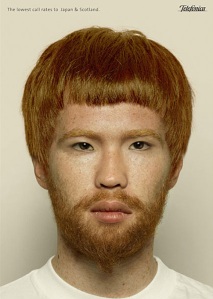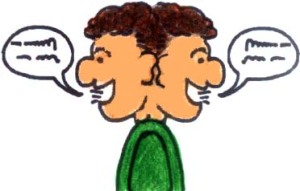
A previous post of mine talked about code-switching. I’d now like to go more in-depth into the branding opportunities it throws up, the mental models it activates, and the type of work dealing with this issue that’s currently out there.
An emerging field of research in business and cognitive science is mental models, which are mental representations of real or imaginary situations. These mental models shape perception, thinking, and importantly for brandcrafters, whether or not we woo wallets.
Previous research with biculturals (bilinguals who have internalized the cultures of both the languages they speak)shows that speaking/hearing a particular language activated distinct sets of culture-specific concepts, or mental frames. These frames include important aspects of their identities. Hence if brands want to tap into a particular cultural concept that would enhance the brand identity in the consumer’s mind, they would do well to try their hand at some code-switching. 
“When biculturals are processing information in English, certain conceptual features are activated, themselves priming other conceptual features and the words associated with them. Those conceptual associations form the mental frames that will influence biculturals’ self- and other-interpretations and subsequent behavior. ” (From the study)
*A fascinating study examined Spanish-English bilinguals and their response to various ads. One such ad for a resort hotel featured a woman sitting on top of a scenic cliff. The text of the ads and the subsequent interviews were either in Spanish or in English. The results showed that when the image and interview were in Spanish, subjects interpreted the woman as being independent and serene. However, in the English language condition, the participants interpreted the woman as being confused, indecisive, and lost.


That is pretty revolutionary. Nothing changed, except for the language. And yet the entire ambience of the advertised product was transformed, as people’s perception of the woman in the ad changed.
Another thing to keep in mind is the power dynamic of the code-switching game. Studies have shown that when an ad is in the majority language (e.g. English in the US), and is code-switched into the minority language (Spanish), people tend to perceive the product as being negative. This is because the mental model of the majority language is one of power & prestige, while the mental model of the minority language speaks of disadvantage and foreignness. Sadly these mental models are magnified for members of the minority language culture.
In my cocina, I would never think of any other coffeemaker: Backfires, reduces product eval
En mi kitchen, nunca haria cafe con ninguna otra cafetera: Works well, increases +ve affect, boosts eval
So brandcrafters, let loose some languages and target those biculturals. Tap into the positive mental models and enhance the consumer’s brand perception. Yalla, Vamos, let’s move!
